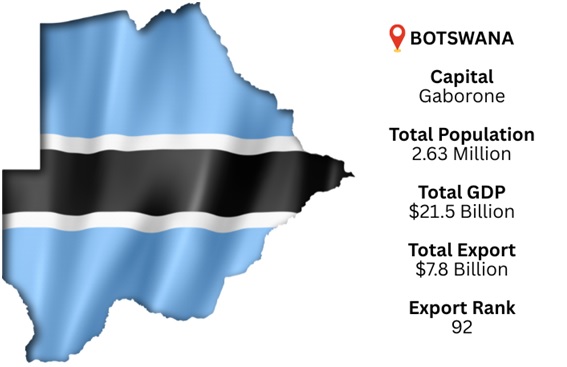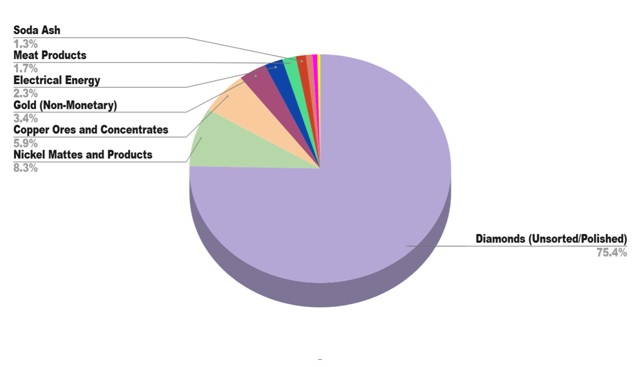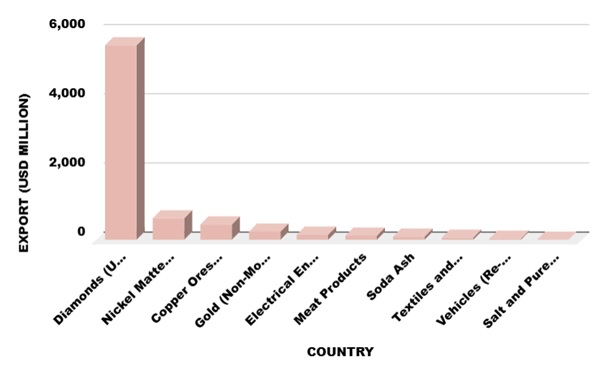Botswana is a landlocked nation in Southern Africa that shares borders with South Africa, Namibia, Zimbabwe, and Zambia. Gaborone is the biggest city and capital. The Gross Domestic Product (GDP) of Botswana is projected to be around USD 21.5 billion in 2024. Botswana is the 92nd-largest exporter in the world, based on recent global trade data. Because of Botswana's substantial diamond trade, Belgium is the country's biggest importer. As per Botswana export data, diamonds are expected to be Botswana's main export, with a total estimated export value of USD 7.8 billion in 2024.
Benefiting from established economic relations with both regional neighbors and foreign partners, Botswana plays a crucial role in Southern Africa's export network. The nation has a strong export economy centered on minerals, especially diamonds, copper, and nickel, while having a tiny population. Its involvement in international trade organizations, a well-run mining industry, and political stability all contribute to its strong export reputation worldwide.



